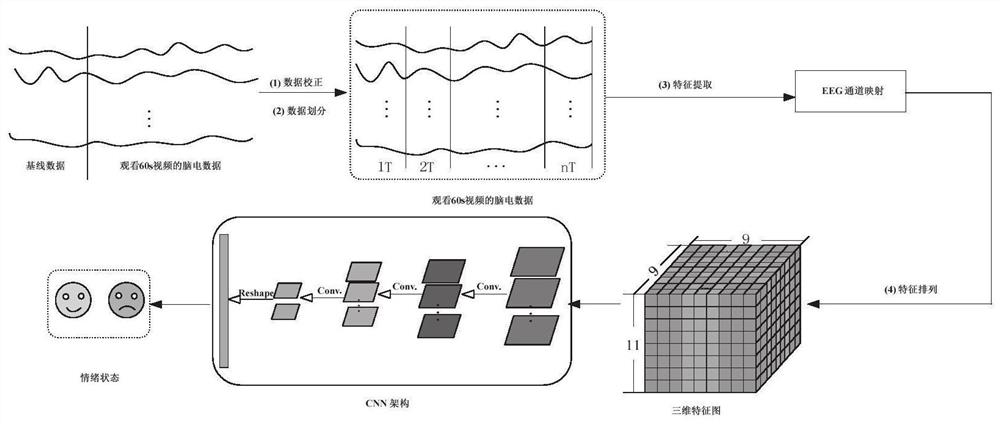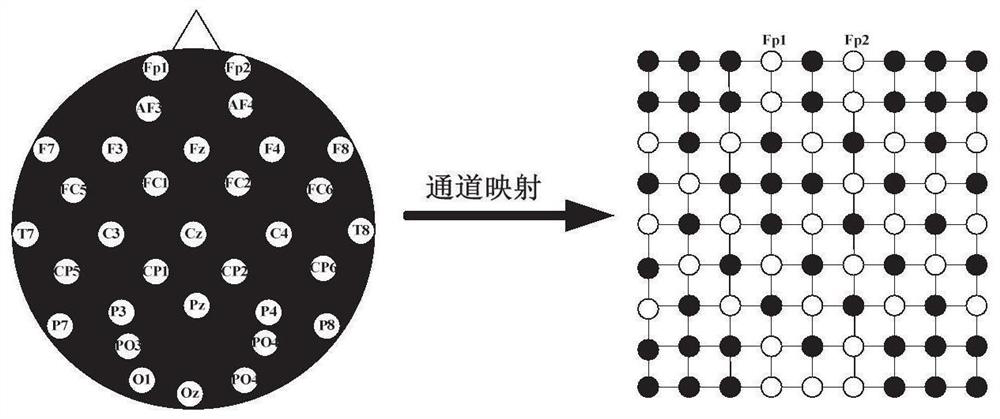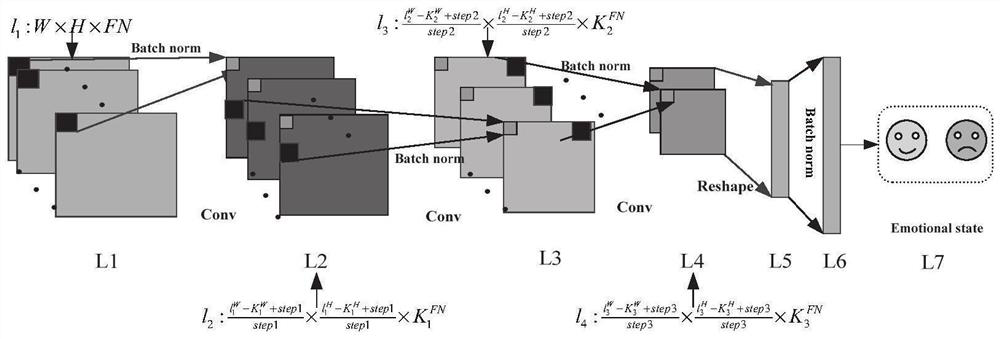Emotion recognition method and system based on three-dimensional feature map and convolutional neural network
A convolutional neural network and emotion recognition technology, which is applied in the field of emotion recognition methods and systems based on three-dimensional feature maps and convolutional neural networks, can solve the problems of small contribution, small amount of data, and provide spatial information to ensure accuracy. , improve the accuracy, the recognition effect is good
- Summary
- Abstract
- Description
- Claims
- Application Information
AI Technical Summary
Problems solved by technology
Method used
Image
Examples
Embodiment 1
[0039] In this embodiment, an emotion recognition method based on a three-dimensional feature map and a convolutional neural network is disclosed, including:
[0040] Obtain the EEG signal to be identified;
[0041] Extract the EEG signal without the underlying emotional state from the EEG signal to be identified;
[0042] Using wavelet packet transform to decompose and reconstruct the EEG signal without basic emotional state, obtain multiple frequency band signals, and obtain the wavelet energy ratio and wavelet entropy of each frequency band signal;
[0043] Obtain the complexity of each channel EEG signal in the EEG signal without a basic emotional state, and form the EEG feature with the wavelet energy ratio and wavelet entropy of each frequency band signal;
[0044] Arrange the EEG features to form a feature cube;
[0045] Input the feature cube into the trained CNN model for emotion recognition.
[0046] Further, the method of eliminating the basic emotional state is ...
Embodiment 2
[0122] In this embodiment, an emotion recognition system based on a three-dimensional feature map and a convolutional neural network is disclosed, including:
[0123] The data acquisition module is used to obtain the electroencephalogram signal to be identified;
[0124] The basic emotional state elimination module is used to extract the non-basic emotional state EEG signal from the EEG signal to be identified;
[0125] The EEG feature acquisition module is used to decompose and reconstruct the EEG signal without a basic emotional state by using wavelet packet transform, obtain multiple frequency band signals, obtain the wavelet energy ratio and wavelet entropy of each frequency band signal, and obtain the EEG signal without a basic emotional state. The complexity of the EEG signal of each channel in the electrical signal, and the wavelet energy ratio and wavelet entropy of each frequency band signal form the EEG feature;
[0126] The feature cube acquisition module is used t...
Embodiment 3
[0129] In this embodiment, an electronic device is disclosed, including a memory, a processor, and computer instructions stored in the memory and executed on the processor. When the computer instructions are executed by the processor, the method based on Steps described in the method for emotion recognition with 3D feature maps and convolutional neural networks.
PUM
 Login to View More
Login to View More Abstract
Description
Claims
Application Information
 Login to View More
Login to View More - R&D
- Intellectual Property
- Life Sciences
- Materials
- Tech Scout
- Unparalleled Data Quality
- Higher Quality Content
- 60% Fewer Hallucinations
Browse by: Latest US Patents, China's latest patents, Technical Efficacy Thesaurus, Application Domain, Technology Topic, Popular Technical Reports.
© 2025 PatSnap. All rights reserved.Legal|Privacy policy|Modern Slavery Act Transparency Statement|Sitemap|About US| Contact US: help@patsnap.com



